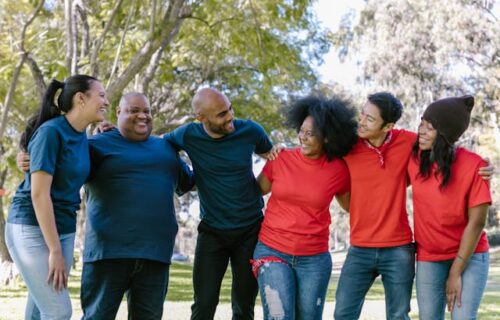
emotional eating | emotion + self-compassion
We began this series on emotional eating two weeks ago by taking a look at whether our hunger is physical or emotional. Last week, we took a look at what our triggers are: what is causing the emotion that drives us to eat?
(Yes, hello, Pandemic—I see you: you’ve been 365+ days of triggers for many of us!)
This week, we’re going to take a look at what emotions arise from our triggers, what happens when we judge ourselves for feeling them—and what can happen if we allow ourselves to feel them.
a range of emotions
We often talk about a range of emotions—and researchers seem to have narrowed the most basic down to anywhere from four to eight. I particularly like Robert Plutchik’s categorization of eight emotions into four pairs of polar opposites:
- joy-sadness
- anger-fear
- trust-distrust
- surprise-anticipation
In Plutchik’s diagram of emotions, he shows how the more intense and complex ones are related to the basic ones, being either a similar emotion on a different part of the intensity spectrum or the combination of other emotions.
Over the past few years of working with clients who eat emotionally, my totally unscientific conclusion is that 90% of them point to sadness and fear as the primary emotion driving their eating with anger a close third place.
No wonder so many of us turned to emotional eating over the past year: what has Covid-19 brought us other than a lot of sadness, fear, and anger?
a cycle of stuck
Many of us grew up believing that showing emotion was not acceptable: suck it up, chin up, push through, stiff upper lip, big girls don’t cry, and all that.
Showing an emotion became equated with feeling one—it’s as though we can’t trust ourselves to feel an emotion without letting it play out in socially unacceptable ways.
And somehow, food and drink—so easily available to most of us—became an acceptable way to drown our sorrows, stuff down our anger, and assuage our fears.
Talk about a negative cycle! We feel something and judge ourselves for feeling it, so we eat or drink too much or make poor food choices, then we judge ourselves for doing that, so we feel worse—but we can’t allow ourselves to feel that, so on and on it goes.
In our health coach training, that’s referred to as “a cycle of stuck.”
feeling our feelings
The way out of the cycle of stuck is often not easy—and it can be simple.
When I work with clients who can’t seem to break a negative habit, I like to say that there are usually two ways to ask the same question:
- UGH! WHY DID I DO THAT *AGAIN*?
- Huh. Why did I do that again?
The first question is judgy, and it’s the end of the conversation and the beginning of the cycle of stuck where we beat ourselves up and keep spiraling downward: Why can’t I do this simple thing? I’m such a loser. There must be something wrong with me. I’m so stupid. I have no self-discipline, no willpower….
Judgment leads to blame and shame and the feeling that we can’t trust ourselves to make a better choice—ever.
The second question is curious, and it’s the beginning of the conversation, a way out of the cycle of stuck because it opens the door to opportunities to change: Why did I do that again? Was I with someone who makes poor choices? Was I allowing someone else to pressure me into it? Was I in a place where better choices weren’t available? What could I do to set myself up for making the better choice next time?
Curiosity leads to self-compassion and the feeling that we can trust ourselves to make a better choice the next time.
With emotional eating, self-compassion can play a similar role: it allows us to feel our feelings and trust that we won’t act them out in inappropriate ways.
- We might need to go in the bedroom and punch our pillow when we’re frustrated with our teen—that way we won’t be tempted to slap her (or eat the whole bag of chips).
- We might need to go away and have a good cry when we’re sad—that way we won’t fall apart in a meeting (or eat the entire chocolate cake).
- We might need to go in the walk-in cooler at work and scream when we’re angry at our boss—that way we won’t tell him off to his face (or have one too many drinks with dinner).
- We might need to simply put our arms around ourselves and tell ourselves we’ll be okay when fear comes up instead of eating the whole sleeve of Girl Scout cookies.
In some instances, simply allowing ourselves to feel our feelings and finding a non-food outlet for them is enough to break the cycle of stuck: the emotion passes, and we don’t spiral into self-judgment.
And sometimes, finding a non-food outlet for emotions is insufficient: we replace one bandage for another because we’re still trying to treat the symptom without addressing the cause.
But that’s a topic for next week!
make the connection
If you’re following along with the series and trying to address what might be emotional eating, here are your action steps/assignments so far:
- Determine whether your hunger is physical or emotional
- Identify the trigger of your emotional hunger
- Name your emotion—and allow yourself to feel it
Because emotional eating can often go hand-in-hand with stress and burnout, I’m putting together a new program on the topic—if you’re looking for support around this, send me an email and let me know so you can be the first to get details!



